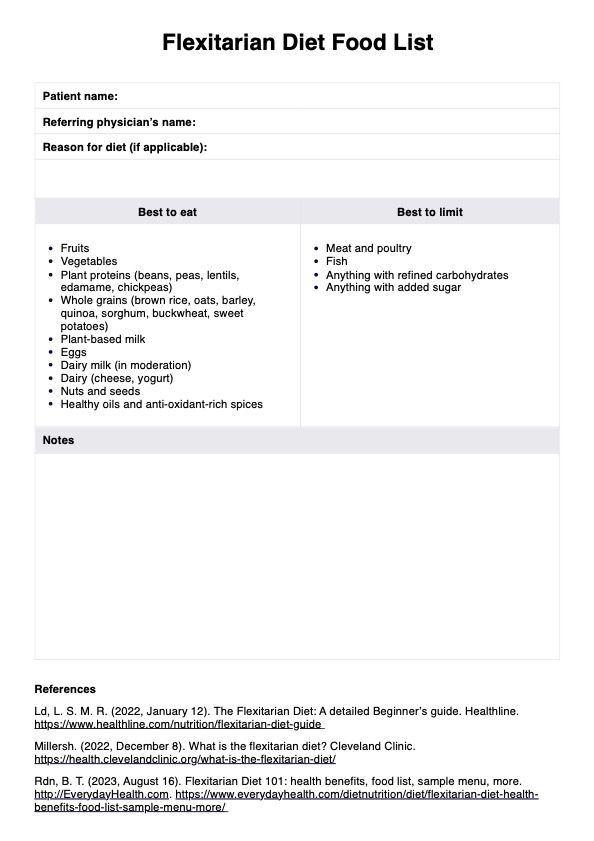Flexitarians primarily consume plant-based foods such as fruits, vegetables, whole grains, nuts, seeds, legumes, and healthy fats like olive oil. They also incorporate small amounts of animal products such as eggs and dairy into their diet and may occasionally eat meat or fish in smaller portions.

Flexitarian Diet Food List
Provide your patient with a flexitarian diet food list when they express interest in trying said diet. Click here for a template to use during consultation.
Flexitarian Diet Food List Template
Commonly asked questions
Individuals of all ages can follow the flexitarian diet, as it is flexible and customizable based on personal preferences and dietary requirements. However, it is always recommended to consult with a healthcare professional before making significant changes to your diet.
Plant-based and flexitarian diets share similarities, as they both emphasize consuming predominantly plant-based foods. However, a plant-based meal typically eliminates all animal products, while a flexitarian diet meal allows for occasional consumption in smaller portions.
EHR and practice management software
Get started for free
*No credit card required
Free
$0/usd
Unlimited clients
Telehealth
1GB of storage
Client portal text
Automated billing and online payments











